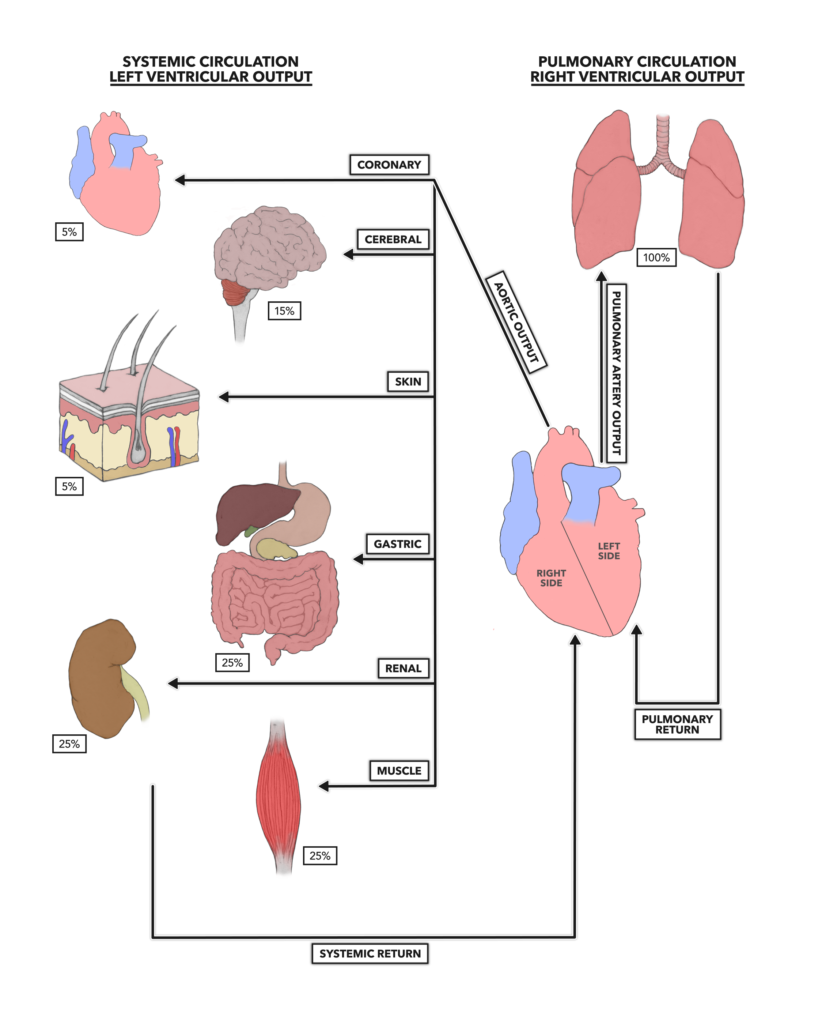When we teach about the heart, we differentiate between the structures and functions of its right and left sides. The major functional difference is that the right side of the heart delivers blood to the lungs and the left side delivers blood to the rest of the body. The right side’s purpose is pulmonary circulation, and the left side is responsible for systemic circulation.

The systemic and pulmonary circulation routes. The systemic blood flow is distributed across a large area and large number of important structures. The pulmonary blood flow is dedicated to the lungs.
The systemic network of vessels and their destinations are extensive and require a great deal of pressure to drive delivery. On average about 100 mmHg of intravascular pressure is needed to push the blood through. The left ventricle’s thick muscular walls provide the required force.
On the pulmonary side, where the lungs are the only destination of the flow, the distance and the associated smaller vascular tree require less driving pressure. The much thinner walls of the right ventricle can produce the approximate 25 mmHg of required pressure.
Note that the amount of blood flowing through the heart and the two circulatory sides can vary dramatically. Everyone understands that when you exercise, the heart rate, and consequently the rate of blood flow, increases. This occurs simultaneously across both sides. We also see an increase in driving pressure in the systemic flow, a necessity caused in part by the local vascular compression induced by muscle contraction. On the pulmonary side, the low driving pressure is maintained, not increased — again, a necessity as increased pressures can cause rupture of the thin capillary walls within the lungs, leading to exercise-induced pulmonary hemorrhage.
The distribution of the systemic flow will also vary with exercise. The most apparent examples of this are the shunting of blood flow away from the gastric region to the working muscles. In this way, the circulatory system adapts to better support muscular contraction. Another example is the diversion of blood flow to the skin to cool the body when body temperature rises during exertion.
The Heart, Part 8: Pulmonary and Systemic Circulation